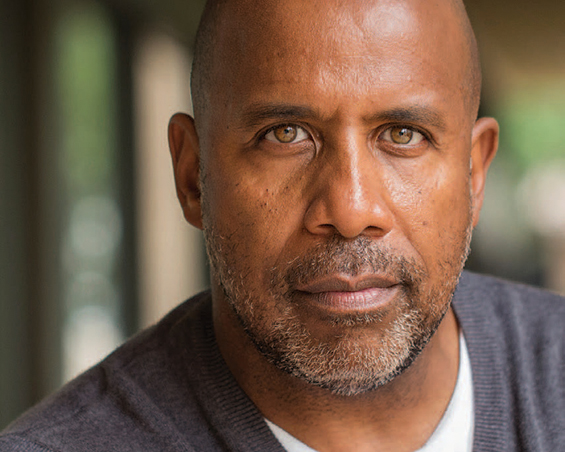In 1978 First Lady Betty Ford declared before a national TV audience, “My name is Betty Ford. I am an alcoholic.” That year the stigma of addiction was at an all-time low. Surveys indicated that 90 percent of Americans believed that addiction was an illness that should be treated. There were historians who believed that 1978 was the best year to have a substance use disorder in America (Sanders, 2011).
If 1978 was the best year to have a substance use disorder, perhaps from a stigma perspective, 1986 was the worst. This was the year that crack-cocaine replaced marijuana as the number one street drug in America (Inaba, Cohen, & Holstein, 2004). On June 19, 1986, famed University of Maryland basketball star Len Bias was drafted number one by the Boston Celtics. Enthusiasm in Boston ensued, as this great young star was to play on the same the team as Hall-of-famers Larry Byrd, Kevin McHale, Dennis Johnson, Nate Archibald, and Robert Parrish. Following the NBA draft, Len Bias attended a party at which he used cocaine to celebrate his draft status, had a heart attack, and died. His death, along with the increased stigma on crack-cocaine, led Congress to intensify its war on drugs, and over the course of the next twenty years, the prison population quadrupled from 400,000 inmates in our nation’s prisons in 1985 to two million by the year 2005 (Sanders, 2013). Today it is estimated that there are 2.5 million inmates in our nation’s prisons, disproportionately African Americans with substance use disorders. African Americans constitute approximately 12 percent of the US population and nearly half of its prison population. They are the most imprisoned group in the world (Alexander, 2012). The increased focus on African Americans as the new face of addiction has led many professionals to be motivated to understand how to work effectively with African Americans with substance use disorders.
This article will begin with barriers to building trust in the counseling relationship with African Americans with substance use disorders, then outline strategies for those who work with African Americans with substance use disorders, including how to build rapport and help facilitate change in the three phases of counseling—the engagement phase, the counseling phase, and the aftercare (continuous care) phase.
Barriers to Building Trust with African Americans
Research indicates that 50 percent of clients who enter outpatient treatment miss their second session and that half of all inpatients drop out of treatment prematurely (Duncan, Miller, & Sparks, 2004). This suggests that client engagement can be a difficult task. With African American clients there are unique historical and current challenges that can make engagement difficult, including several hundred years of oppression and medical maltreatment, which can contribute to mistrust. Consider the Tuskegee experiment conducted between 1932 and 1972, in which African American men were told that they were receiving antibiotics for the treatment of syphilis, when they were actually being administered a placebo by the medical community. The experimenters wanted secretly to discover how syphilis would affect the human body if left untreated. In essence, the African Americans in the study were being used as human guinea pigs. Such stories are passed through the African American community across generations and can serve as cautionary tales against trusting institutions.
Another reason why some African Americans might mistrust the counseling relationship is that counseling often involves talking and speaking your truth, and historically, African Americans have paid a price for speaking their truths. During the Civil Rights Movement of the 1960s, Dr. Martin Luther King, Jr., Malcolm X, members of the Black Panther Party, and other Civil Rights leaders were wiretapped by the FBI for speaking their truths. Dr. King, Malcolm X, and Medgar Evers, field secretary for the NAACP, were assassinated for talking.
Additionally, previous generations of African Americans were labeled as Communists or un-American for speaking out against injustice. For instance, Dr. W. E. B. DuBois, the first African American to earn a PhD from Harvard, was labeled a Communist for speaking his truths and was then exiled to Ghana, West Africa, as a result. The multitalented Paul Robeson—lawyer, political advocate, and professional entertainer—was exiled to Russia for speaking his truths. Mohammad Ali was stripped of his title. In the 1990s, the rap group N.W.A. was arrested for exercising their First Amendment rights in song lyrics. In the book, The Rage of the Privileged Class (1994), Ellis Cose writes about middle-class African Americans in corporate America who are afraid to speak openly about hitting a glass ceiling for fear of being ostracized or fired. In summary, the historical message that African Americans have received is that if you talk you can get exiled, fired, labeled a Communist or un-American or even assassinated. This historical backdrop can negatively impact the counseling relationship. Clinicians may need to work to build trust early in the counseling relationship with African Americans, starting with the engagement phase of counseling.
The Engagement Phase
There are a number of questions programs can ask themselves if they have a desire to effectively engage African Americans in counseling. Let’s go over some of these.
How is the Initial Greeting?
A warm greeting can go a long way toward helping facilitate rapport with all clients, including African Americans. In my work as an addiction consultant and trainer, I have noticed that in many large metropolitan areas where African Americans receive addictions services, there is a trend for clients to be greeted by security—in some instances armed security. Given the fact that African Americans have historical and current negative interactions with the police, being greeted by law enforcement can increase mistrust and trauma. Being met by a receptionist with a warm greeting can go a long way toward building rapport with African American clients.
What Do the Pictures on the Wall Communicate?
The pictures on the walls of every agency can communicate to clients and potential clients who is welcome and who is not welcome. Years ago I was working as an employee assistance professional at an agency that was over one hundred years old. We received a phone call from the owner of one of the number one African American radio stations in America, who expressed an interest in having an employee assistance program for the station and requested an opportunity to visit the agency. The second he got off the elevator and saw the pictures on the wall at the agency, he stated, “There are no African Americans on the walls—no contract.” He abruptly got back on the elevator and left. I spent the next thirty years of my career wondering whether clients look at our walls during the first visit and whether their comfort would be increased if they saw images of themselves in the pictures on the walls.
What Do the Magazines in the Waiting Area Communicate to Clients?
Years ago I was invited to do a consultation for an agency in which 80 percent of their clients routinely missed their second outpatient session. My first thought was to visit the waiting room where I could experience the agency from the perspective of new clients. I glanced at the magazines—Oprah, Good Housekeeping, and Martha Stewart. That agency worked with gang-affiliated African American males. My first thought was, “Who are these magazines for?”
What is the Typical Length of the Wait?
When working with clients who have histories of discrimination and marginalization, a short wait can go a long way. When such clients are required to sit in waiting rooms for long stretches, some will internalize this as though they are seen as unimportant by the organization.
In additional to the aforementioned questions, positive service energy from the counselor who greets the clients and a brief tour of the agency—that is, where to hang one’s coat, where the coffee room and vending machines are located—can go a long way toward building rapport, particularly in cross-cultural situations, prior to initiating the counseling relationship.
The Counseling Phase
Utilizing a strength-based approach in the beginning of the counseling phase can help build rapport with African Americans with substance use disorders. At a recent seminar participants were asked to list some of the negative stereotypes about African Americans. A partial list of responses were, “They are untrustworthy, lazy, oversexed, baby-makers, more criminal- and addiction-prone.” Utilizing a strength-based approach can serve to reduce the impact of these stereotypes on both clients and counselors. Here are some strength-based questions that can be asked to build rapport with African American clients:
- What do you do well?
- How have you been able to endure so much?
- What are the best three moments you can recall in your life?
- What is the best thing you ever made happen?
- What is your previous life suffering preparing you to do with the rest of your life?
- What have you learned from what you have gone through?
- When you faced those challenges what sources of strength did you draw from?
- Which of your experiences has taught you the most about your own resilience?
Other approaches to building rapport with African American clients during the counseling phase include the following.
Give Them a Voice
Make sure that clients have a voice in the treatment plan. Individuals from cultural groups that have histories of oppression often have fear of, concern about, and resistance to helping professionals who do no respect their right to self-determination. An excellent question to ask early in counseling is, “What are your goals in recovery?”
Talk About Race
Be willing to have an open and sensitive discussion of race and other differences. Many African Americans will not openly state that they are uncomfortable working with counselors whose cultural background is different from theirs. Counselors will have to listen with a “third ear” for indirect statements that may indicate that race may be a barrier to rapport for the client. Clients may hint at this discomfort by sharing stories they have had—both negative and positive—with members of the counselor’s cultural group. To generate a sensitive discussion of race and other differences, counselors might state, “I notice that you’ve shared experiences you’ve had in your personal life with persons from my cultural group. What is it like to work with me, a counselor from that cultural group?” Such a question from counselors can often go a long way toward building rapport with African American clients. Clients may sense that you really want to build rapport, evident by the fact that you were willing to discuss a taboo subject like racial differences and cross-cultural tension.
Be Aware of Intercultural Issues
There are also intercultural differences that may need to be addressed when counselors are African American and work with African American clients. These include age, gender, socioeconomic, and other differences.
Be Transparent and Authentic
When counselors are authentic and easy to read by clients, due to their perceived congruence—consistency among the counselor’s words, affect, and internal feelings—more of their mistakes, such as the use of generalizations or stereotypes, will be forgiven by clients because of this perceived authenticity.
Be Open to Multiple Pathways of Recovery
Over the course of the past fifty years the most predominate recommendation to initiate recovery has been formal addictions treatment followed by a referral to a Twelve Step group. There are still individuals who work in the addiction field who believe that this is the only pathway to recovery. A belief that there is only one way to recover can lead to a great deal of resistance to counseling, premature termination, and relapse (Sanders, 2011). In 1944, Bill W, the cofounder of Alcoholics Anonymous, wrote, “The roads to recovery are many. We have no monopoly on reviving alcoholics” (Wilson, 1944). Along with the traditional approaches to recovery, there are a number of nontraditional ways in which African Americans have initiated and sustained their recovery, including the following.
Religious Pathways of Recovery
In the height of the cocaine epidemic, the emergence of managed health care, and the shrinkage of inpatient and outpatient treatment covered by insurance carriers in the 1980s, every denomination of African American churches developed faith-based drug ministries in order to provide a venue where African Americans could recover (Sanders, 2013).
Cultural Pathways of Recovery
Rites-of-passage groups are emerging as a culturally-specific approach to addiction recovery among African Americans, helping them to recapture aspects of their culture that have been lost historically and to transition from one phase of development to another while simultaneously supporting their recovery efforts (Sanders, 2013).
Shifting Allegiance
This is a common style of recovery practiced by African American women in which they initiate their recovery in Twelve Step groups, then shift their recovery to the church as the new frontier to their recovery support.
Medication-Assisted Recovery
This includes the use of methadone maintenance and buphenorphine.
Twelve Step Groups
There is a myth that Twelve Step groups are not effective within African American communities. While this is not the only pathway of recovery, such groups thrive within African American communities.
Reading and Education
There are numerous stories of African Americans who initiated their recovery from addiction in prison by reading books about their culture, which stimulated their sense of cultural pride and ultimately fostered recovery. Other African Americans considered their education—from high-school dropout to PhD—as a part of their recovery.
Aftercare (Continuing Care)
Eighty percent of relapses occur within the first ninety days of clients leaving treatment (White, Kurtz, & Sanders, 2006). There are some African American clients who are vulnerable to relapse if they return home to a community that is high-risk for relapse, sometimes due to high unemployment, community trauma, and easy access to drugs. The use of recovery coaches in the natural environment can be instrumental in helping to reduce the risk of relapse in aftercare. Recovery coaches are similar to Twelve Step sponsors, in that their primary credential is recovery, which is proof that recovery is possible. The primary ways in which they differ is that Twelve Step sponsors need to honor only one pathway of recovery—the Twelve Step route—whereas recovery coaches have to honor multiple pathways of recovery, ranging from total abstinence to medication-assisted recovery to harm reduction. Having a menu of styles of recovery from which the clients can choose honors their right to self-determination. It is often helpful that these recovery coaches are indigenous to the communities they serve (White & Sanders, 2008) and have a working knowledge of nontraditional resources within the African American community that can support recovery, including:
- GED programs
- Community colleges
- Vocational schools
- Churches that provide resources and help with recovery support
- Twelve Step groups within the community
- Ex-offenders in long-term recovery
- Programs that help with expungement. There is evidence that having a felony can have longer-term consequences than having an addiction, and the difficulty of securing employment as a result of this felony can be a major relapse trigger (Hart, 2014).
- Industries that have histories of hiring individuals in recovery
Conclusion
While the death of Len Bias and the intensification of the war on drugs increased the stigma of addiction in the African American community, there are numerous prominent recovering African Americans, including Frederick Douglass, one of the first famous recovering alcoholics in American history (White & Sanders, 2002), Malcolm X, singer Natalie Cole, actor Samuel L Jackson, and basketball player and coach John Lucas. Also included in this list is Darryl Strawberry, the New York Yankee baseball player, who, in the height of the crack-cocaine epidemic of the 1980s, was seen as the poster child of addiction relapse, and who is now in long-term recovery.
For every famous African American in recovery there are numerous unsung heroes whose recoveries are important to the African American community and in some instances to the world. It is helpful for those of us who are counselors to remember that recovery is possible in the African American community and is happening every day, and we can be the catalysts to help facilitate that recovery.
References
Alexander, M. (2012). The new Jim Crow: Mass incarceration in the age of colorblindness. New York, NY: The New Press.
Cose, E. (1994). The rage of a privileged class: Why are middle-class blacks angry? Why should America care? New York, NY: HarperCollins.
Duncan, B. L., Miller, S. D., & Sparks, J. A. (2004). The heroic client: A revolutionary way to improve effectiveness through client-directed outcome-informed therapy. San Francisco, CA: Jossey-Bass.
Hart, C. (2014). High price: A neuroscientist’s journey of self-discovery that challenges everything you know about drugs and society. New York, NY: HarperCollins.
Inaba, D. S., Cohen, W. E., & Holstein, M. E. (2004). Uppers, downers, and all arounders: Physical and mental effects of psychoactive drugs. Ashland, OR: CNS Publications.
Sanders, M. (2011). Slipping through the cracks: Intervention strategies for clients with multiple addictions and disorders. Deerfield Beach, FL: Health Communications.
Sanders, M. (2013). Substance use disorders in African American communities: Prevention, treatment, and recovery. London, England: Taylor & Francis.
White, W., Kurtz, E., & Sanders, M. (2006). Recovery management. Chicago, IL: Great Lakes ATTC.
White, W., & Sanders, M. (2002). Addiction and recovery among African Americans before 1900. Counselor, 3(6), 64–6.
White, W., & Sanders, M. (2008). Recovery management and people of color. Alcoholism Treatment & Quarterly, 26(3), 365–95.
Wilson, W. G. (1944). Basic concepts of Alcoholics Anonymous. New York State Journal of Medicine, 44(16), 1805–8.














 Counselor Magazine is the official publication of the California Association of Addiction Programs and Professionals (CCAPP). Counselor offers online continuing education, article archives, subscription deals, and article submission guidelines. It has been serving the addiction field for more than thirty years.
Counselor Magazine is the official publication of the California Association of Addiction Programs and Professionals (CCAPP). Counselor offers online continuing education, article archives, subscription deals, and article submission guidelines. It has been serving the addiction field for more than thirty years.